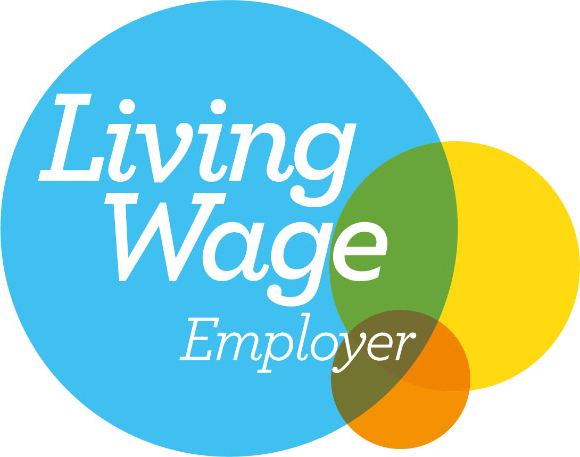자유게시판
| 제목 | Overview of Healthcare in The UK |
|---|---|
| 작성자 | Rosie Ogilby |
| 조회수 | 1회 |
| 작성일 | 25-06-10 19:42 |
| 링크 |
본문

Received 2010 Sep 1; Accepted 2010 Sep 27; Issue date 2010 Dec.

. The National Health System in the UK has progressed to turn into one of the biggest healthcare systems on the planet. At the time of writing of this evaluation (August 2010) the UK federal government in its 2010 White Paper "Equity and quality: Liberating the NHS" has announced a strategy on how it will "produce a more responsive, patient-centred NHS which attains outcomes that are among the best worldwide". This review article provides an introduction of the UK health care system as it currently stands, with emphasis on Predictive, Preventive and Personalised Medicine elements. It aims to serve as the basis for future EPMA short articles to broaden on and provide the changes that will be executed within the NHS in the forthcoming months.
Keywords: UK, Healthcare system, National health system, NHS
Introduction
The UK healthcare system, National Health Service (NHS), came into presence in the aftermath of the Second World War and became functional on the fifth July 1948. It was first proposed to the Parliament in the 1942 Beveridge Report on Social Insurance and Allied Services and it is the tradition of Aneurin Bevan, a previous miner who ended up being a political leader and the then Minister of Health. He founded the NHS under the concepts of universality, free at the point of delivery, equity, and spent for by main funding [1] Despite numerous political and organisational changes the NHS remains to date a service available universally that cares for individuals on the basis of requirement and not capability to pay, and which is moneyed by taxes and national insurance coverage contributions.
Health care and health policy for England is the responsibility of the central federal government, whereas in Scotland, Wales and Northern Ireland it is the responsibility of the respective devolved governments. In each of the UK nations the NHS has its own distinct structure and organisation, but in general, and not dissimilarly to other health systems, healthcare makes up of two broad sections; one handling strategy, policy and management, and the other with actual medical/clinical care which is in turn divided into main (community care, GPs, Dentists, Pharmacists and so on), secondary (hospital-based care accessed through GP recommendation) and tertiary care (expert healthcare facilities). Increasingly distinctions between the two broad sections are ending up being less clear. Particularly over the last years and assisted by the "Shifting the Balance of Power: The Next Steps" (2002) and "Wanless" (2004) reports, progressive changes in the NHS have actually caused a greater shift towards regional instead of main decision making, elimination of barriers between primary and secondary care and more powerful focus on client choice [2, 3] In 2008 the previous government reinforced this direction in its health technique "NHS Next Stage Review: High Quality Take Care Of All" (the Darzi Review), and in 2010 the present federal government's health strategy, "Equity and quality: Liberating the NHS", stays encouraging of the very same concepts, albeit through perhaps different systems [4, 5]

The UK government has just revealed plans that according to some will produce the most transformation in the NHS given that its beginning. In the 12th July 2010 White Paper "Equity and quality: Liberating the NHS", the current Conservative-Liberal Democrat coalition government outlined a technique on how it will "produce a more responsive, patient-centred NHS which attains results that are amongst the very best worldwide" [5]
This review post will therefore provide an introduction of the UK healthcare system as it presently stands with the objective to work as the basis for future EPMA posts to expand and present the changes that will be carried out within the NHS in the upcoming months.
The NHS in 2010
The Health Act 2009 developed the "NHS Constitution" which officially unites the purpose and concepts of the NHS in England, its worths, as they have been developed by clients, public and staff and the rights, pledges and obligations of patients, public and personnel [6] Scotland, Northern Ireland and Wales have actually likewise consented to a high level declaration declaring the principles of the NHS throughout the UK, although services may be provided in a different way in the 4 nations, showing their various health requirements and situations.
The NHS is the largest company in the UK with over 1.3 million staff and a budget of over ₤ 90 billion [7, 8] In 2008 the NHS in England alone employed 132,662 physicians, a 4% increase on the previous year, and 408,160 nursing staff (Table 1). Interestingly the Kings Fund estimates that, while the total number of NHS personnel increased by around 35% between 1999 and 2009, over the very same period the number of managers increased by 82%. As a proportion of NHS staff, the variety of supervisors increased from 2.7 per cent in 1999 to 3.6 per cent in 2009 (www.kingsfund.org.uk). In 2007/8, the UK health spending was 8.5% of Gdp (GDP)-with 7.3% accounting for public and 1.2% for personal costs. The net NHS expense per head across the UK was most affordable in England (₤ 1,676) and highest in Scotland (₤ 1,919) with Wales and Northern Ireland at roughly the same level (₤ 1,758 and ₤ 1,770, respectively) [8]
Table 1.
The distribution of NHS labor force according to primary personnel groups in the UK in 2008 (NHS Information Centre: www.ic.nhs.uk)
The total organisational structure of the NHS in England, Scotland, Wales and Northern Ireland in 2010 is displayed in Fig. 1. In England the Department of Health is accountable for the instructions of the NHS, social care and public health and delivery of healthcare by developing policies and strategies, protecting resources, keeping track of performance and setting national standards [9] Currently, 10 Strategic Health Authorities manage the NHS at a regional level, and Medical care Trusts (PCTs), which presently control 80% of the NHS' budget plan, provide governance and commission services, as well as guarantee the accessibility of services for public heath care, and provision of social work. Both, SHAs and PCTs will stop to exist once the plans laid out in the 2010 White Paper end up being carried out (see area listed below). NHS Trusts operate on a "payment by outcomes" basis and get the majority of their earnings by supplying healthcare that has been commissioned by the practice-based commissioners (GPs, and so on) and PCTs. The main kinds of Trusts include Acute, Care, Mental Health, Ambulance, Children's and Foundation Trusts. The latter were developed as non-profit making entities, free of government control however likewise increased monetary obligations and are managed by an independent Monitor. The Care Quality Commission regulates independently health and adult social care in England in general. Other professional bodies provide financial (e.g. Audit Commission, National Audit Office), treatment/services (e.g. National Patient Safety Agency, Medicines and Healthcare Products Regulatory Agency) and expert (e.g. British Medical Association) policy. The National Institute for Health and Clinical Excellence (NICE) was developed in 1999 as the body accountable for developing national guidelines and requirements connected to, health promotion and prevention, evaluation of brand-new and existing technology (consisting of medications and procedures) and treatment and care medical guidance, available throughout the NHS. The health research study method of the NHS is being executed through National Institute of Health Research (NIHR), the total spending plan for which was in 2009/10 close to ₤ 1 billion (www.nihr.ac.uk) [10]
Fig. 1.

of the NHS in England, Scotland, Wales and Northern Ireland, in 2010
Section 242 of the NHS Act states that Trusts have a legal responsibility to engage and include patients and the general public. Patient experience information/feedback is formally gathered nationally by annual study (by the Picker Institute) and is part of the NHS Acute Trust performance structure. The Patient Advice Liaison Service (PALS) and Local Involvement Networks (LINks) support client feedback and participation. Overall, inpatients and outpatients surveys have actually exposed that patients rate the care they get in the NHS high and around three-quarters show that care has been excellent or exceptional [11]
In Scotland, NHS Boards have replaced Trusts and offer an integrated system for tactical instructions, efficiency management and clinical governance, whereas in Wales, the National Delivery Group, with suggestions from the National Advisory Board, is the body carrying out these functions (www.show.scot.nhs.uk; www.wales.nhs.uk). Scottish NHS and Special Boards deliver services, with care for particular conditions delivered through Managed Clinical Networks. Clinical guidelines are released by the Scottish Intercollegiate Guidelines Network (SIGN) and the Scottish Medicines Consortium (SMC) recommendations on using brand-new drugs in the Scottish NHS. In Wales, Local Heath Boards (LHBs) strategy, safe and secure and provide health care services in their locations and there are 3 NHS Trusts offering emergency, cancer care and public health services nationally. In Northern Ireland, a single body, the Health and Care Board is managing commissioning, performance and resource management and improvement of health care in the nation and six Health and Social Care Trusts deliver these services (www.hscni.net). A number of health agencies support secondary services and deal with a broad variety of health and care problems including cancer screening, blood transfusion, public health etc. In Wales Community Health Councils are statutory lay bodies promoting the interests of the general public in the health service in their district and in Northern Ireland the Patient and Client Council represent clients, customers and carers.
Predictive, Preventive and Personalised Medicine (PPPM) in the NHS
Like other national healthcare systems, predictive, preventive and/or personalised medication services within the NHS have actually typically been used and belong to illness diagnosis and treatment. Preventive medication, unlike predictive or customised medication, is its own established entity and relevant services are directed by Public Health and provided either by means of GP, neighborhood services or healthcare facilities. Patient-tailored treatment has actually constantly been common practice for good clinicians in the UK and any other health care system. The terms predictive and personalised medication though are evolving to explain a much more technically innovative method of detecting illness and forecasting action to the requirement of care, in order to increase the advantage for the patient, the general public and the health system.
References to predictive and personalised medication are progressively being introduced in NHS related info. The NHS Choices site explains how patients can get personalised recommendations in relation to their condition, and offers info on predictive blood test for disease such as TB or diabetes. The NIHR through NHS-supported research study and together with scholastic and business working together networks is investing a significant proportion of its budget in validating predictive and preventive restorative interventions [10] The previous government thought about the development of preventive, people-centred and more productive health care services as the methods for the NHS to react to the obstacles that all contemporary healthcare systems are dealing with in the 21st century, particularly, high client expectation, ageing populations, harnessing of info and technological improvement, changing workforce and progressing nature of disease [12] Increased focus on quality (patient safety, patient experience and scientific efficiency) has actually likewise supported innovation in early diagnosis and PPPM-enabling technologies such as telemedicine.
A number of preventive services are provided through the NHS either through GP surgical treatments, social work or healthcare facilities depending on their nature and include:
The Cancer Screening programs in England are nationally collaborated and consist of Breast, Cervical and Bowel Cancer Screening. There is also an informed choice Prostate Cancer Risk Management program (www.cancerscreening.nhs.uk).
The Child Health Promotion Programme is handling concerns from pregnancy and the first 5 years of life and is provided by community midwifery and health going to teams [13]
Various immunisation programs from infancy to adulthood, provided to anyone in the UK totally free and usually provided in GP surgical treatments.
The Darzi evaluation set out six key scientific goals in relation to improving preventive care in the UK consisting of, 1) taking on weight problems, 2) decreasing alcohol harm, 3) treating drug addiction, 4) reducing smoking cigarettes rates, 5) improving sexual health and 6) enhancing psychological health. Preventive programs to attend to these problems have actually been in location over the last decades in different types and through different initiatives, and include:
Assessment of cardiovascular threat and identification of people at greater threat of cardiovascular disease is typically preformed through GP surgeries.
Specific preventive programmes (e.g. suicide, mishap) in regional schools and neighborhood

Family planning services and avoidance of sexually transferred illness programs, frequently with a focus on youths
A range of avoidance and health promo programmes associated with way of life options are delivered though GPs and social work consisting of, alcohol and smoking cigarettes cessation programs, promotion of healthy consuming and exercise. Some of these have a particular focus such as health promo for older people (e.g. Falls Prevention).
White paper 2010 - Equity and quality: liberating the NHS
The present federal government's 2010 "Equity and quality: Liberating the NHS" White Paper has actually set out the vision of the future of an NHS as an organisation that still remains real to its founding principle of, offered to all, free at the point of usage and based upon need and not capability to pay. It also continues to uphold the concepts and worths defined in the NHS Constitution. The future NHS becomes part of the Government's Big Society which is construct on social uniformity and entails rights and responsibilities in accessing collective healthcare and making sure effective usage of resources hence providing better health. It will deliver healthcare outcomes that are amongst the very best on the planet. This vision will be carried out through care and organisation reforms concentrating on four areas: a) putting patients and public first, b) enhancing on quality and health outcomes, c) autonomy, responsibility and democratic authenticity, and d) cut bureaucracy and improve efficiency [5] This technique makes recommendations to problems that relate to PPPM which indicates the increasing impact of PPPM principles within the NHS.
According to the White Paper the concept of "shared decision-making" (no choice about me without me) will be at the centre of the "putting focus on patient and public first" strategies. In truth this includes strategies emphasising the collection and capability to access by clinicians and patients all client- and treatment-related information. It likewise consists of greater attention to Patient-Reported Outcome Measures, higher choice of treatment and treatment-provider, and significantly customised care planning (a "not one size fits all" technique). A newly created Public Health Service will bring together existing services and place increased emphasis on research analysis and evaluation. Health Watch England, a body within the Care Quality Commission, will offer a stronger client and public voice, through a network of local Health Watches (based upon the existing Local Involvement Networks - LINks).
The NHS Outcomes Framework sets out the concerns for the NHS. Improving on quality and health results, according to the White Paper, will be achieved through revising goals and healthcare priorities and establishing targets that are based on medically credible and evidence-based procedures. NICE have a central function in establishing suggestions and requirements and will be anticipated to produce 150 brand-new requirements over the next 5 years. The federal government prepares to develop a value-based rates system for paying pharmaceutical companies for providing drugs to the NHS. A Cancer Drug Fund will be created in the interim to cover patient treatment.
The abolition of SHAs and PCTs, are being proposed as means of supplying higher autonomy and responsibility. GP Consortia supported by the NHS Commissioning Board will be accountable for commissioning health care services. The introduction of this kind of "health management organisations" has actually been somewhat questionable however possibly not totally unforeseen [14, 15] The transfer of PCT health enhancement function to local authorities aims to provide increased democratic authenticity.
Challenges facing the UK healthcare system
Overall the health, along with ideological and organisational difficulties that the UK Healthcare system is dealing with are not different to those dealt with by many national healthcare systems across the world. Life expectancy has been progressively increasing across the world with occurring increases in persistent diseases such as cancer and neurological disorders. Negative environment and lifestyle impacts have actually developed a pandemic in weight problems and associated conditions such as diabetes and cardiovascular disease. In the UK, coronary cardiovascular disease, cancer, renal illness, psychological health services for grownups and diabetes cover around 16% of overall National Health Service (NHS) expenditure, 12% of morbidity and between 40% and 70% of death [3] Across Western societies, health inequalities are disturbingly increasing, with minority and ethnic groups experiencing most major health problems, sudden death and disability. The House of Commons Health Committee alerts that whilst the health of all groups in England is enhancing, over the last 10 years health inequalities between the social classes have widened-the gap has increased by 4% for males, and by 11% for women-due to the truth that the health of the abundant is improving much quicker than that of the bad [16] The focus and practice of healthcare services is being transformed from traditionally offering treatment and helpful or palliative care to significantly handling the management of chronic disease and rehab programs, and using illness avoidance and health promotion interventions. Pay-for-performance, modifications in regulation together with cost-effectiveness and spend for medications concerns are ending up being a vital aspect in brand-new interventions reaching scientific practice [17, 18]
Preventive medication is solidly developed within the UK Healthcare System, and predictive and customised methods are increasingly becoming so. Implementation of PPPM interventions might be the solution but likewise the cause of the health and healthcare difficulties and dilemmas that health systems such as the NHS are dealing with [19] The efficient intro of PPPM requires scientific understanding of disease and health, and technological improvement, together with comprehensive techniques, evidence-based health policies and proper policy. Critically, education of healthcare professionals, clients and the general public is likewise critical. There is little doubt nevertheless that utilizing PPPM appropriately can help the NHS achieve its vision of providing healthcare outcomes that will be among the finest on the planet.
- 1. Delamothe T. NHS at 60: founding principles. BMJ. 2008; 336:1216 -8. doi: 10.1136/ bmj.39582.501192.94. [DOI] [PMC free article] [PubMed] [Google Scholar]- 2. Shifting the Balance of Power: The Next Steps. Department of Health publications. 2002. www.dh.gov.uk/en/Publicationsandstatistics/Publications/PublicationsPolicyAndGuidance/DH_4008424
- 3. Wanless D. Securing good health for the entire population: Final report-February 2004. www.dh.gov.uk/en/Publicationsandstatistics/Publications/PublicationsPolicyAndGuidance/DH_4074426
- 4. Professor the Lord Darzi of Denham KBE High quality take care of all: NHS Next Stage Review last report. Department of Health publications. 2008. www.dh.gov.uk/en/Publicationsandstatistics/Publications/PublicationsPolicyAndGuidance/DH_085825
- 5. White paper Equity and quality: Liberating the NHS. Department of Health publications. 2010. www.dh.gov.uk/en/Publicationsandstatistics/Publications/PublicationsPolicyAndGuidance/DH_117353
- 6. The NHS Constitution for England. Department of Health publications. 2009. www.dh.gov.uk/en/Publicationsandstatistics/Publications/PublicationsPolicyAndGuidance/DH_093419
- 7. NHS Hospital and Community Health Services: Medical and Dental personnel England 1998-2008. The NHS Information Centre. 2009. www.ic.nhs.uk/webfiles/publications/nhsstaff2008/medandden/Medical%20and%20Dental%20bulletin%201998-2008.pdf
- 8. House of Commons Health Committee: Public Expenditure on Health and Personal Social Services. The House of Commons. 2008. www.publications.parliament.uk/pa/cm200809/cmselect/cmhealth/cmhealth.htm
- 9. The DH Guide A guide to what we do and how we do it. Department of Health publications. 2007. http://www.dh.gov.uk/en/Publicationsandstatistics/Publications/index.htm
- 10. NIHR Annual Report 2009/10: Embedding Health Research. National Institute for Health Research. 2010. www.nihr.ac.uk/Pages/default.aspx
- 11. Leatherman S. and Sutherland K. Patient and Public Experience in the NHS. The Health Foundation. 2007. www.health.org.uk/publications/research_reports/patient_and_public.html
- 12. NHS 2010-2015: from excellent to excellent. Preventative, people-centred, efficient. Department of Health publications. 2009. www.dh.gov.uk/en/Publicationsandstatistics/Publications/PublicationsPolicyAndGuidance/DH_109876
- 13. Updated Child Health Promotion Programme. Department of Health publications. 2009. webarchive.nationalarchives.gov.uk/+/ www.dh.gov.uk/en/Publicationsandstatistics/Publications/DH_083645.
- 14. Klein R. What does the future hold for the NHS at 60? BMJ. 2008; 337: a549. doi: 10.1136/ bmj.a549. [DOI] [PMC free post] [PubMed] [Google Scholar]- 15. Ham C (2007) Clinically integrated systems: the next step in English health reform? Briefing paper. London Nuffield Trust.
- 16. Health Inequalities Third Report of Session 2008-09. House of Commons Health Committee. 2009; Volume I. www.publications.parliament.uk/pa/cm200809/cmselect/cmhealth/286/28602.htm.
- 17. Clinicians, services and commissioning in persistent illness management in the NHS The need for collaborated management programs. Report of a joint working party of the Royal College of Physicians of London, the Royal College of General Practitioners and the NHS Alliance. 2004. www.rcgp.org.uk/PDF/Corp_chronic_disease_nhs.pdf.
- 18. Hughes DA. From NCE to NICE: the role of pharmacoeconomics. Br J Clin Pharmacol. 2010; 70( 3 ):317 -9. doi: 10.1111/ j.1365-2125.2010.03708. x. [DOI] [PMC complimentary post] [PubMed] [Google Scholar]- 19. Griggs JJ. Personalized medication: a perk of advantage? Clin Pharmacol Ther.




